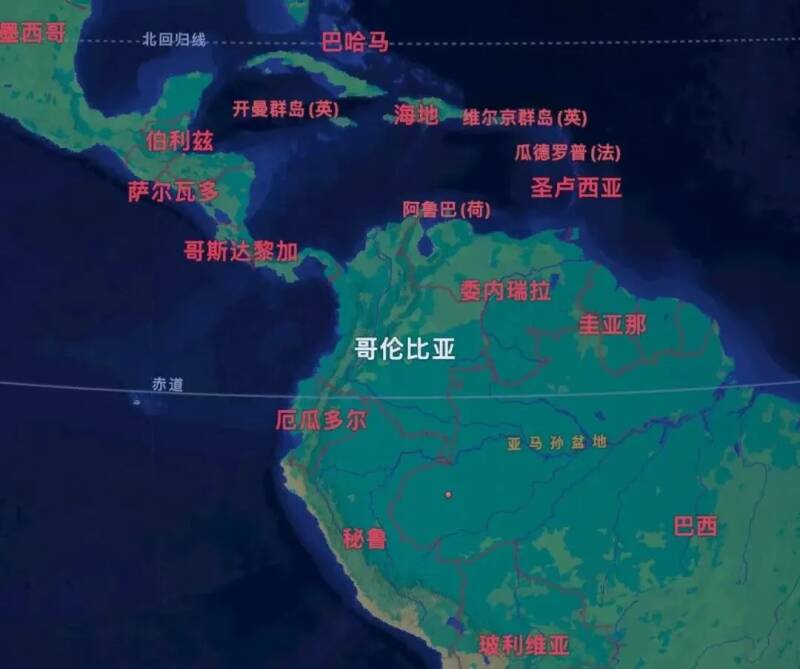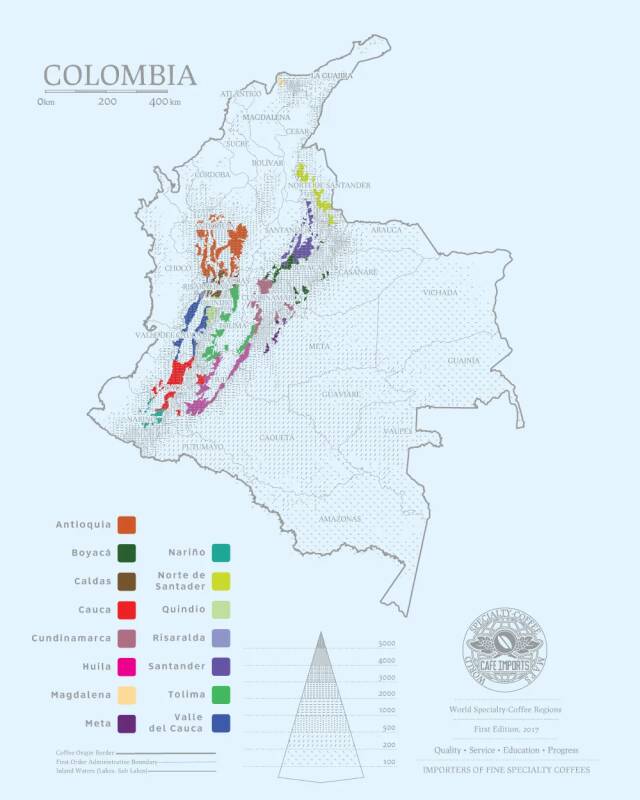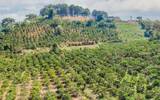Introduction to Hope Estate in Cauca Province, a coffee producing area in Colombia
Colombia is a rich country, with the world-famous "four treasures", coffee, flowers, gold and emeralds, and coffee is one of them. Colombia is also the third largest coffee producer in the world, after Brazil and Vietnam.
Columbia Colombia
The topography of Colombia is roughly divided into the western mountain area and the eastern plain area. The west is mainly the Andes, and there are many coastal plains; the east is mainly composed of Orinoco plain and Amazon plain. The Andes are divided into the eastern, central and western Cordillera mountains in Colombia.

Colombia is located in the tropics, and the climate varies according to the topography. The southern part of the eastern plain and the Pacific coast belong to the tropical rain forest climate, the mountains of 1000-2000 meters above sea level belong to the subtropical climate, and the northwest belongs to the savanna climate. Colombia has a number of volcanoes and rivers, as well as 51.9% of the country's forests. High-altitude mountains, volcanic soil, a variety of climate, sufficient Rain Water and sunshine, is an ideal area for coffee cultivation.
Colombia's coffee-producing areas are concentrated in the Andes, on steep slopes about 1300 meters above sea level, with a year-round temperature of about 18 ℃ and annual rainfall of 2000-3000 mm. Colombia also has three Codiera mountains extending north and south, right into the Andes, and the mountain steps provide a diverse climate, so it is the harvest season all year round.

Colombia's main coffee producers include the provinces of Cauca (Cauca), Santander (Santander), Narino (Narino), Tolima (Tolima) and Huila (Huilan). It also has a number of well-known manors, such as Hope Manor and the dividing line manor that is more common in Qianjie.
Hope Manor Cafe Granja La Esperanza
Hope the estate has five coffee farms in Colombia.
Potos í: located in the province of Cauca, Colombia (Cauca), planting 1400-1860 meters above sea level, with 11 plots covering an area of 52 hectares, mainly planting some new varieties such as Sidra.
Cerro Azul: located in Cauca, Colombia, it is planted at 1700-2000 m above sea level and has seven plots covering an area of 17.4ha. It is famous for its meticulous treatment.
Las Margatitas: located in the province of Cauca, Colombia (Cauca), it is planted at 1570-1850 meters above sea level and has 13 plots covering an area of 33.8ha, mainly growing Rosa Gesha and Sudan Rumei Sudan Rume.
Estate of Hope (La Esperanza): located in the province of Cauca, Colombia (Cauca), it is planted at 1430-1760 meters above sea level and has 11 plots covering an area of 34.3ha, with varieties such as bourbon Bourbon, Kaddura Caturra and Rosa Gesha.
Hawaii (Hawaii): located in Cundinamarca province of Kundinamaka, it is planted at 1450-1530 m above sea level. It has 10 plots and covers an area of 12.5ha. Varieties such as Bourbon Bourbon, Kaddura Caturra and Castiu Castillo are planted.
The estate is currently owned by the Herrera family, which bought the Potos í estate in 1945 and gradually acquired and established it to form what is now the five estates. In addition, the laboratory team with Q-Grader certification continues to improve the production process to ensure the quality of coffee beans, so the estate has won a number of awards.
Important Notice :
前街咖啡 FrontStreet Coffee has moved to new addredd:
FrontStreet Coffee Address: 315,Donghua East Road,GuangZhou
Tel:020 38364473
- Prev

Vietnam's coffee production is expected to reach 29 million bags! Prices still have major variables
Recently, the U.S. Department of Agriculture released the status of the coffee industry in Vietnam in Asian countries. According to the report, Vietnam's coffee production in 2024/25 is expected to be 29 million bags (60 kg/bag), slightly less than the earlier forecast of 29.1 million bags. Rising coffee prices encourage coffee farmers to have more capital to invest in their lives
- Next

Lucky Guy changed his name? Zhengzhou netizens discovered the "Lucky Cup" coffee shop?!
▲ Click to pay attention| Daily Boutique Coffee Culture Magazine Coffee Factory At present, the coffee 9.9 price war is fierce. Even the high-priced Starbucks has quietly lowered prices and participated in this scuffle. Lucky Coffee, who is famous for its low prices, is different this time. He drew a "6 yuan 6" track and poured coffee
Related
- What effect does Italian American coffee with filter paper have? Will coffee taste better if it is put on filter paper at the bottom of the powder bowl?
- What is the color difference in coffee beans? What are the characteristics of honey processed coffee beans? Why are the anaerobically treated coffee beans uneven in color?
- How does novice Xiaobai quickly get started and make coffee? Newbies learn to make coffee by hand and share the specific steps and process process!
- Costa tea has a shelf life of 100 years?! Expert: Unable to verify
- It's a huge uproar! American milk addition was rejected by Manner employees?!
- Mocha pot coffee bean recommendations| How fine and how much powder should be used for grinding? What parameter ratios do I need to use to make milk with Mocha pot coffee?
- What are the characteristics of the world's top ten coffee beans treated with Costa Rica honey? How to make black honey kadura from Tarazhu Pilon Processing Plant taste good?
- How to make deep-roasted coffee? What grinding water temperature does authentic Jamaica Blue Mountain No. 1 coffee use to brew it well?
- Selected high-grade rose summer coffee flavor tasting guide Why Panama rose summer has the aroma of flowers and fruits
- What equipment does a novice Xiaobai need to buy to learn to make coffee? Filter cup electronic scale bean grinder manual flushing pot purchase guide

